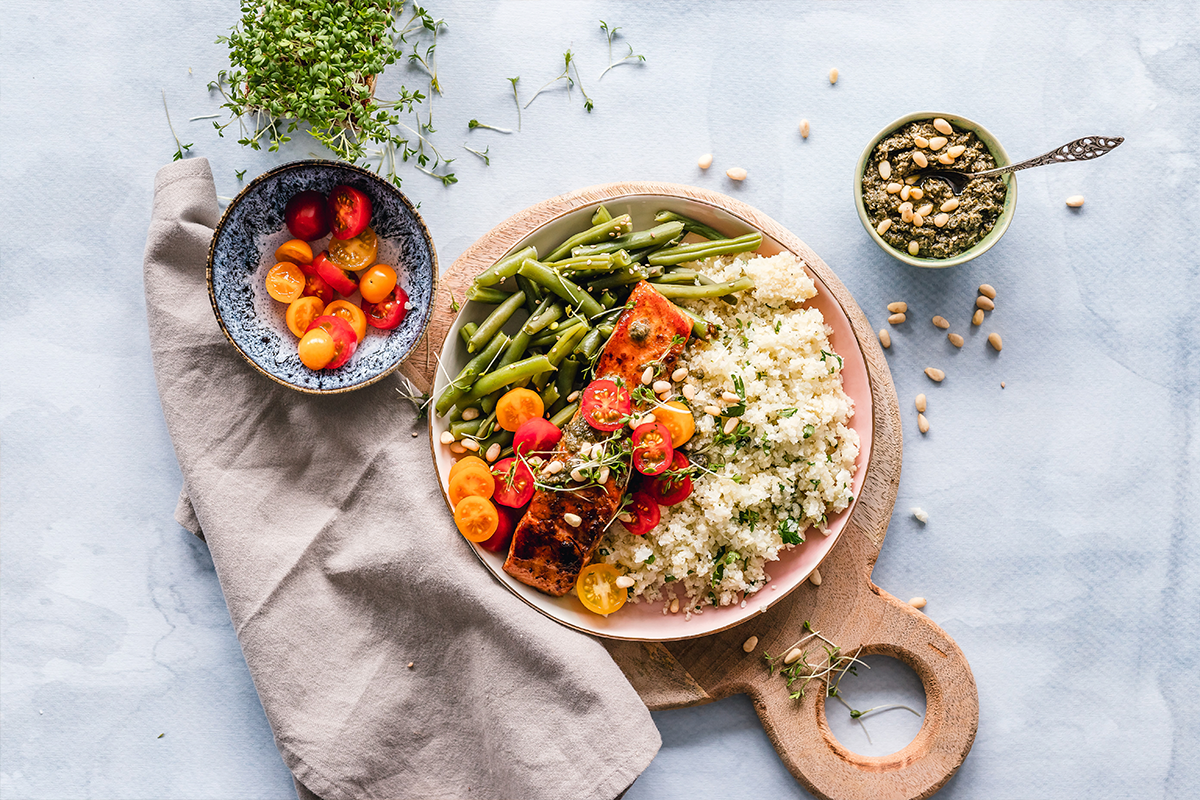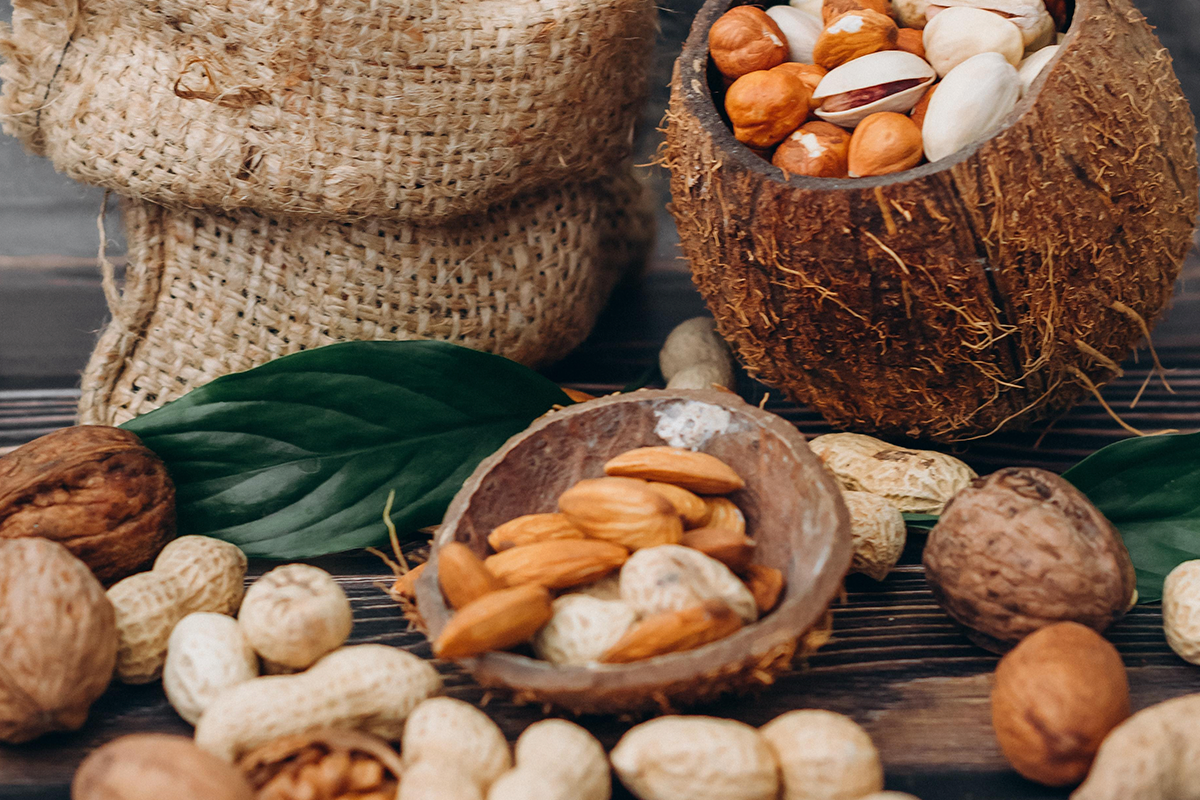Pairing wine and plant-based proteins


Plant-based proteins are here to stay. Their daily consumption is on the rise and not just among vegetarians and vegans, but also among people looking to reduce the consumption of meat in their diet, whether due to health reasons or an increasing commitment to the environment. Whatever the reason, there is a wide range of raw or ready-to-serve plant-based proteins. If you are someone who likes a glass of wine with dinner, here we are going to help you find the best pairing for these types of foods, often characterized as having more subtle aromas, flavors, and textures. Although this does not make them any less interesting.

Ph: Ella Olsson at Unsplash
Among plant-based proteins, soy stands out thanks to its versatility. In the form of edamame, soy milk, tofu, or tempeh, soy is a complete source of essential amino acids. Tofu and tempeh are the most commonly used as a substitute for animal meat, thanks to their versatility and texture, although they can be quite bland when eaten raw. For this reason, they need to be marinated or seasoned, for example, with soy sauce or miso, and play around with their preparation. Some delicious options for cooking them are pan-seared, sautéed with vegetables, or in the case of tofu (in its softer version), scrambled like eggs, with paprika and nutritional yeast, to provide more flavor.

Ph: Natalia Yakovleva at Unsplash
Thanks to their high mineral content, including magnesium, iron, and potassium, legumes are an undisputed source of nutrition when it comes to plant-based protein. Moreover, you can buy ready-to-serve formats, making it a healthy food that can quickly get us out of a bind. Whether it is canned garbanzos to make hummus, beans to add to a salad, casserole or to make hamburgers, the excuse that they are time-consuming is no longer valid.

Ph: Ella Olsson at Unsplash
Considered a superfood, quinoa is really a seed that has been used and consumed by the Andean communities for thousands of years. Among its properties, we can note that just 100 grams of quinoa contains between 12 and 16 grams of protein, in addition to being rich in fiber. This gives it great popularity among plant-based diets. It is cooked like rice but has to be washed thoroughly before boiling to remove the bitter flavor of the saponin.

Ph: Raspopova Marina at Unsplash
Another attractive source of plant-based proteins are nuts, which work perfectly as snacks to serve before dinner or take with you wherever you go. Why are they called dried? Because they have less than 50% water content. The top 3 nuts with the most protein content are peanuts, almonds, and pistachios, which also provide a good amount of healthy fats. Ideal for eating by themselves, in granola, on salads, or for making milk, cheese, or butter, nuts are also a good alternative to dairy products.
The plant-based proteins we mentioned above are very different in texture and flavor when compared to animal protein. They are softer and more delicate, so we need to lean towards lighter-bodied red wines, or white wines with good acidity. But what is the best option? The general recommendation is to base your selection on the type of preparation and the sauces or seasoning used.
In the case of Asian-style sautéed preparations, with miso, soy sauce, and vegetables, the wine should be able to support the green notes of the vegetables. This makes a crisp wine with vegetable notes, like Gran Reserva Sauvignon Blanc, an ideal pairing.
In the case of tomato-based dishes, like lasagna, spaghetti with soy meat sauce, or bean-based chili con carne, these should be paired with a juicy red wine with low tannins, like Pinot Noir, or a medium-bodied red with silky tannins, like Gran Reserva Cabernet Sauvignon. The same pairing works if, for example, you use ketchup on a plant-based hamburger.
In the case of hot saucepan dishes with quinoa or legumes, like beans or lentils, as well as tomato, onion, carrots, and potatoes, a Syrah or Gran Reserva Carmenere will complement the earthy notes of both proteins.
Meanwhile, Chardonnay makes for an undisputed pairing with dried nuts. Whether baked, served over fresh salads, or made into cheese for an appetizer, this wine has notes of toasted nuts and acidity, making for an exquisite contrast to the healthy fats.
We comply with the highest standards of verified social and environmental performance, transparency, and legal responsibility to balance benefit and purpose.
We adopt an Impact Business Model, creating beneficial links between business, community, and environment.
The Gran Reserva vineyards are an important part of the project to conserve native forest areas and protect local biodiversity. Our native forests have the ability to retain rainwater and control the kind of climate change that results from water shortages.
We take care of 1,432 hectares of protected forests and, on average per vineyard, a total of 105 species of fauna and 48 species of registered flora.
Our effort to preserve nature begins with responsible water consumption. 99% of the water we use comes from surface and subterranean sources.
Our vineyards are drip irrigated, which translates to a 90% efficiency on water consumption, and over the past 3 years, we’ve reduced our water footprint by 10%.
All of our winemaking processes require the use of energy. Our choice to invest in clean, renewable energy reflects our desire to co-create a sustainable planet for the future.
100% of the electricity used to make the wines in the Gran Reserva collection come from renewable sources, including solar energy.
Concha y Toro has been certified under the Wines of Chile Sustainability Code since 2012, which means that our vineyards are officially recognized as sustainable vineyards.
The wines in our Gran Reserva collection are crafted entirely from estate-owned grapes in sustainably managed vineyards.